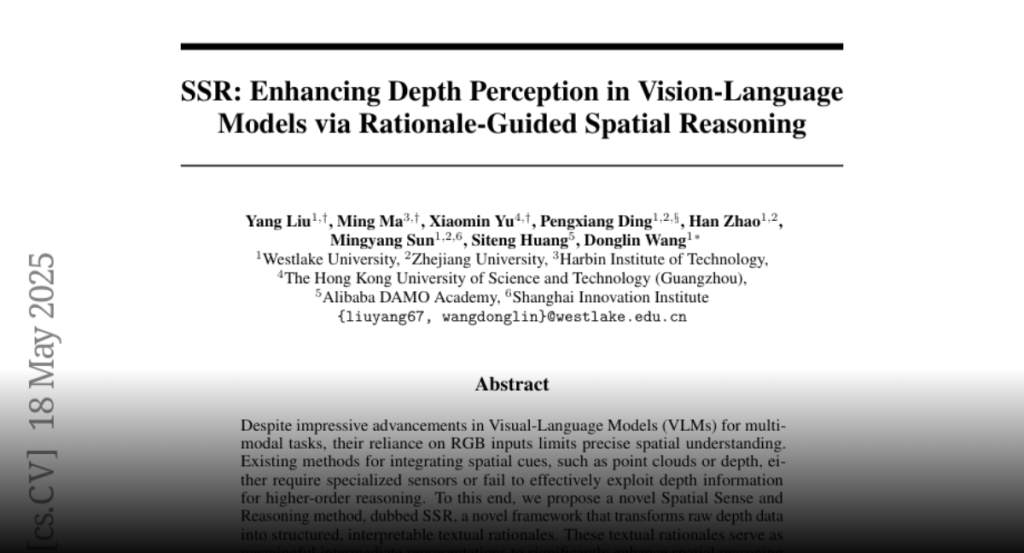Despite impressive advancements in Visual-Language Models (VLMs) for
multi-modal tasks, their reliance on RGB inputs limits precise spatial
understanding. Existing methods for integrating spatial cues, such as point
clouds or depth, either require specialized sensors or fail to effectively
exploit depth information for higher-order reasoning. To this end, we propose a
novel Spatial Sense and Reasoning method, dubbed SSR, a novel framework that
transforms raw depth data into structured, interpretable textual rationales.
These textual rationales serve as meaningful intermediate representations to
significantly enhance spatial reasoning capabilities. Additionally, we leverage
knowledge distillation to compress the generated rationales into compact latent
embeddings, which facilitate resource-efficient and plug-and-play integration
into existing VLMs without retraining. To enable comprehensive evaluation, we
introduce a new dataset named SSR-CoT, a million-scale visual-language
reasoning dataset enriched with intermediate spatial reasoning annotations, and
present SSRBench, a comprehensive multi-task benchmark. Extensive experiments
on multiple benchmarks demonstrate SSR substantially improves depth utilization
and enhances spatial reasoning, thereby advancing VLMs toward more human-like
multi-modal understanding. Our project page is at
https://yliu-cs.github.io/SSR.

